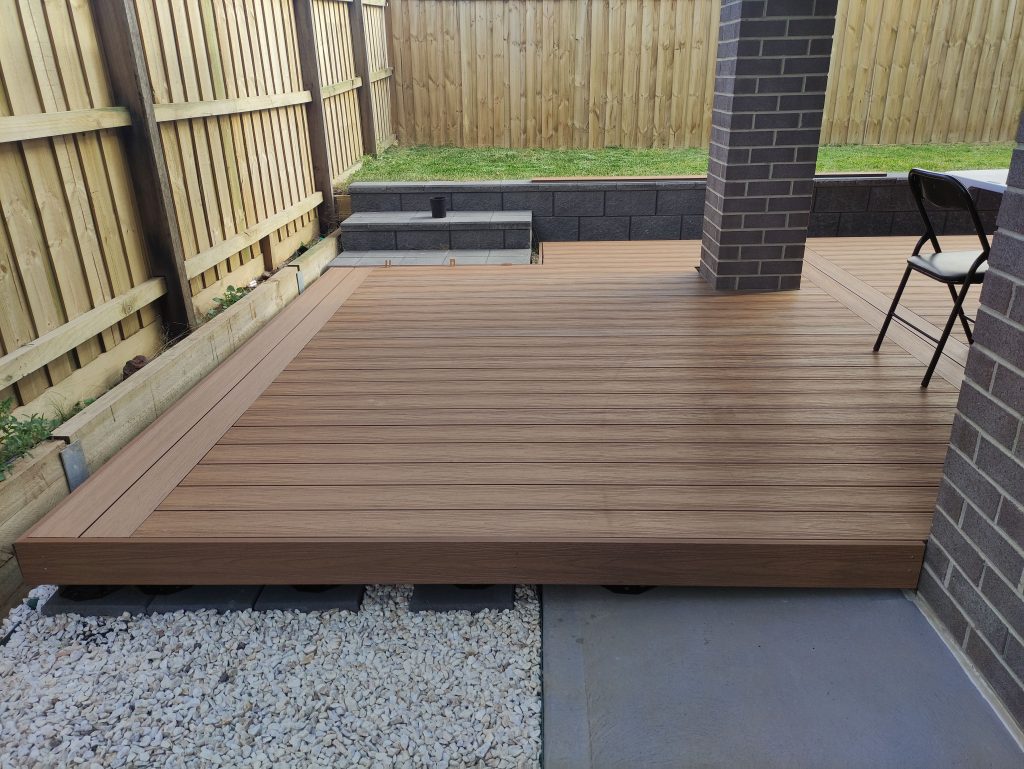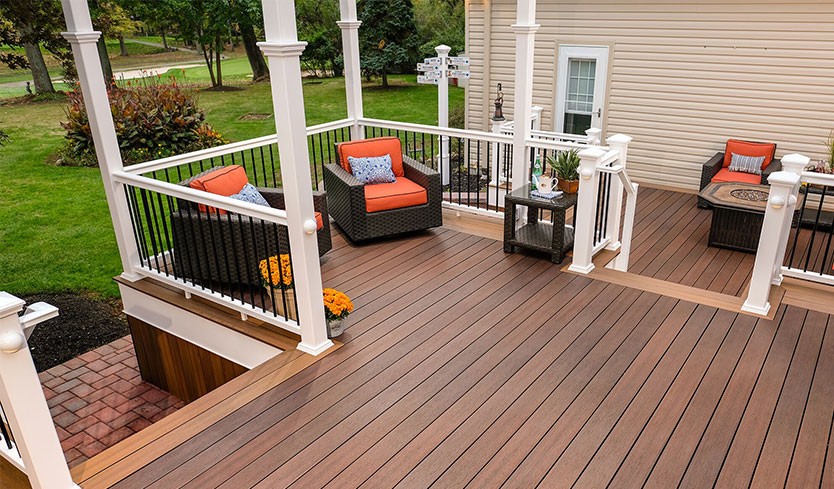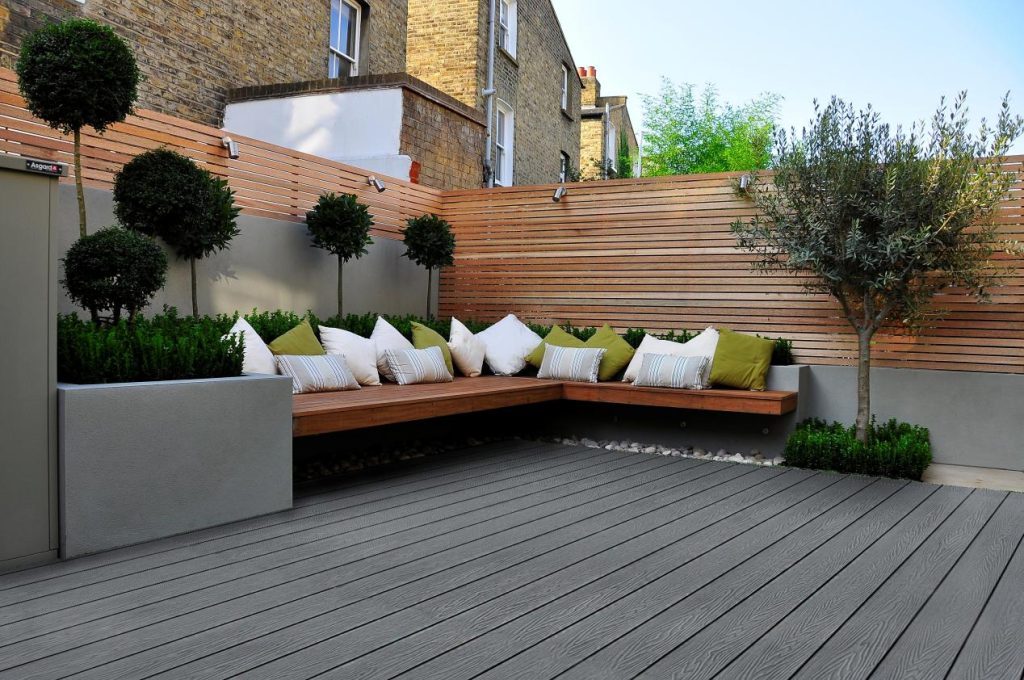Transforming an old concrete patio or walkway into a stunning, low-maintenance outdoor space is more achievable than ever thanks to modern composite decking. If you’re wondering whether it’s possible to install composite decking on concrete, the answer is yes—with the right planning and preparation. This article explores the ins and outs of installing composite decking on concrete, helping homeowners and contractors alike make informed decisions for beautiful, durable results.
Table of Contents
Why Install Composite Decking Over Concrete?
Concrete patios and slabs are common in older homes or urban properties, but over time, they can become cracked, stained, or simply outdated. Instead of tearing out the concrete—a labor-intensive and costly task—homeowners are increasingly looking to overlay it with composite decking.
Aesthetic Upgrade: Composite decking provides a warm, natural look that concrete simply can’t match. With wood grain textures and a wide range of colors, composite decking can completely transform the appearance of an outdoor area.
Cost Efficiency: Removing and disposing of a concrete slab can be expensive. By installing decking over concrete, you save on demolition and labor costs while still upgrading your outdoor space.
Durability: Composite decking is designed to resist moisture, mold, and pests, making it ideal for outdoor use in various climates. It doesn’t splinter or rot like traditional wood, offering a longer lifespan with minimal upkeep.
Eco-Friendly Solution: Many composite decking boards are made from recycled materials. By choosing this option, you reduce waste and support sustainable practices.
Common Use Cases:
- Outdoor patios
- Pool surrounds
- Walkways
- Rooftop terraces
- Urban balconies
This solution is especially useful in spaces where digging or foundation modification isn’t practical. Plus, it raises the usable height slightly, which can be beneficial when aligning the new surface with door thresholds.
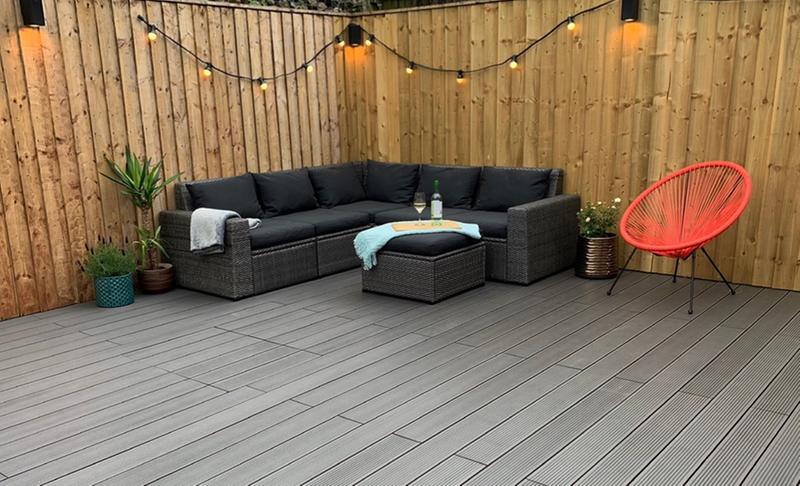
Is It Safe and Practical? Key Considerations Before Installation
Before jumping into the installation process, it’s crucial to evaluate the condition and suitability of the existing concrete surface. Not all slabs are created equal, and certain issues can affect the longevity and safety of your new deck.
Check the Structural Integrity: Ensure the concrete slab is structurally sound. Large cracks, crumbling sections, or unstable areas can compromise the decking system.
Surface Evenness: Composite decking requires a flat and level surface for proper support. Minor variations can be corrected with adjustable deck pedestals or shims, but major slopes or unevenness should be addressed beforehand.
Moisture Drainage: Standing water or poor drainage can lead to mold growth and material degradation. It’s essential to make sure that the concrete allows for proper water runoff. If drainage is an issue, installing a slight slope or using drainage mats can help.
Height and Clearance: Ensure that the additional height added by the decking and substructure won’t obstruct doors or utilities. Most systems add at least 2–3 inches to the surface.
Ventilation and Airflow: Proper airflow under the decking is essential to prevent moisture buildup and promote longevity. Ensure that there’s at least a 1-inch gap between the concrete and the underside of the decking to allow for air circulation.
Local Building Codes: Check your local regulations and building codes, especially if your deck is raised or installed on a rooftop. You may need permits or specific load calculations.
With these factors in mind, installing composite decking over concrete is not only safe but often the most practical solution for upgrading outdoor surfaces.
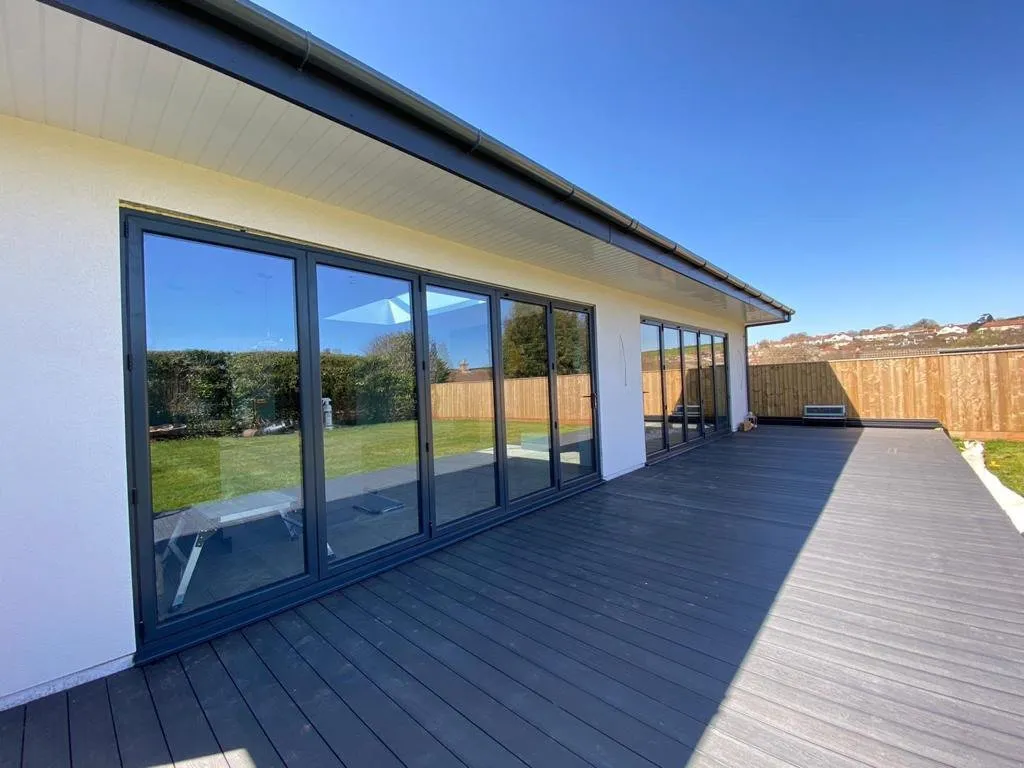
How to Install Composite Decking Over Concrete: Step-by-Step Guide
Installing composite decking over concrete is a manageable DIY project for those with basic carpentry skills, but it also presents unique challenges that require careful planning. Here’s a comprehensive step-by-step guide:
Step 1: Clean and Inspect the Concrete Begin by removing any debris, dirt, or old coatings from the concrete surface. Use a pressure washer for deep cleaning, and fill any cracks or holes with appropriate concrete filler. Allow everything to dry thoroughly.
Step 2: Plan the Layout Decide on the decking orientation and measure the area carefully. Consider where water will drain and how boards will be staggered or joined. Layout planning is critical to minimize waste and achieve a polished appearance.
Step 3: Install a Vapor Barrier (Optional) If the area is prone to moisture, consider laying a vapor barrier or drainage mat over the concrete to enhance protection and airflow.
Step 4: Build the Substructure (Joist System) You cannot install composite decking directly on concrete without a subframe. Common options include:
- Pressure-treated timber joists (elevated on spacers or rubber pads)
- Aluminum or steel joists (ideal for humid areas)
- Plastic composite joists (resistant to rot and lightweight)
Use spacers or adjustable pedestals to raise the joists off the concrete, ensuring even height and proper drainage.
Step 5: Secure the Joists Fix the joists in place using masonry anchors or adhesive where necessary. Ensure all joists are level and spaced appropriately (usually 12–16 inches on center).
Step 6: Lay the Decking Boards Follow manufacturer instructions for board spacing, alignment, and fastener types. Most composite systems support hidden fastening clips that provide a clean finish. Leave appropriate expansion gaps as recommended.
Step 7: Trim and Finish Once all boards are in place, cut off excess material, install fascia boards, and ensure the deck edges are neat. Optionally, install skirting to conceal the substructure.
Following this method ensures a secure, attractive, and long-lasting installation.
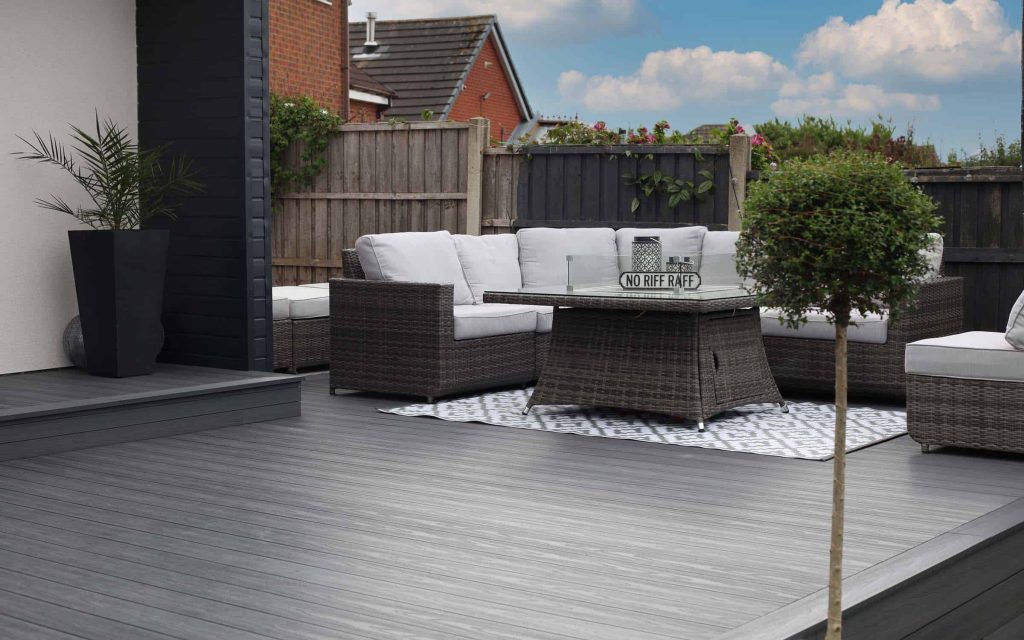
Common Mistakes to Avoid When Installing Composite Decking on Concrete
Even seasoned DIYers can make costly errors during installation. Avoid these common pitfalls to ensure your deck lasts for years:
Skipping the Substructure: Directly laying composite decking on concrete without a proper support frame can lead to structural instability and poor ventilation.
Poor Drainage Planning: Trapped moisture beneath the deck can cause mildew and material damage. Always allow for water runoff and consider drainage mats or channels.
Ignoring Expansion Gaps: Composite materials expand and contract with temperature changes. Neglecting expansion spacing can lead to buckling or warping.
Using Untreated Materials: Regular timber joists in contact with moisture-prone surfaces can rot quickly. Use pressure-treated or composite joists for better durability.
Incorrect Fasteners: Not all screws or clips are suitable for composite decking. Always follow the manufacturer’s guidelines for fasteners to avoid surface damage and ensure longevity.
Neglecting Permits or Codes: Especially for raised decks or rooftop installations, local codes may dictate structural requirements or safety features like railings. Always verify compliance before starting work.
Overlooking Obstructions: HVAC units, water spouts, or access panels should remain reachable. Don’t cover vital systems or reduce access to maintenance areas.
Avoiding these mistakes will save time, money, and frustration down the road.

Benefits of Choosing Composite Decking for Concrete Surfaces
Composite decking is more than just a cosmetic upgrade—it brings lasting value, especially when installed over aging concrete.
Low Maintenance: Unlike wood, composite decking doesn’t require staining, sealing, or painting. Cleaning is simple with water and mild soap.
Weather Resistance: It resists rot, mold, and UV damage. Ideal for all climates—hot sun, heavy rain, or snowy winters.
Slip Resistance: Many composite boards come with textured surfaces that offer better grip, especially useful for pool decks or damp climates.
Longevity: Most composite decking comes with warranties ranging from 15 to 30 years, providing peace of mind.
Design Flexibility: Available in a variety of colors, widths, and finishes. You can match your home’s exterior or create contrasting focal points.
Eco-Friendly Manufacturing: Many brands, including Hosung WPC, use recycled plastic and wood fibers in their composite decking products, reducing environmental impact.
Added Property Value: A well-installed composite deck enhances curb appeal and can increase resale value.
These advantages make composite decking a smart investment, especially when repurposing old concrete spaces.
Why Choose Hosung WPC for Composite Decking in Australia?
Hosung WPC is a trusted name in the composite decking industry with years of experience supplying the Australian market. Their products are:
Made from eco-friendly recycled materials
Designed to withstand harsh Australian UV exposure and climate
Available in various textures and colors to suit any architectural style
Supported with long-term warranties
Their competitive composite decking price per square meter Australia offering—paired with premium quality—makes Hosung WPC an excellent partner for homeowners and businesses alike.
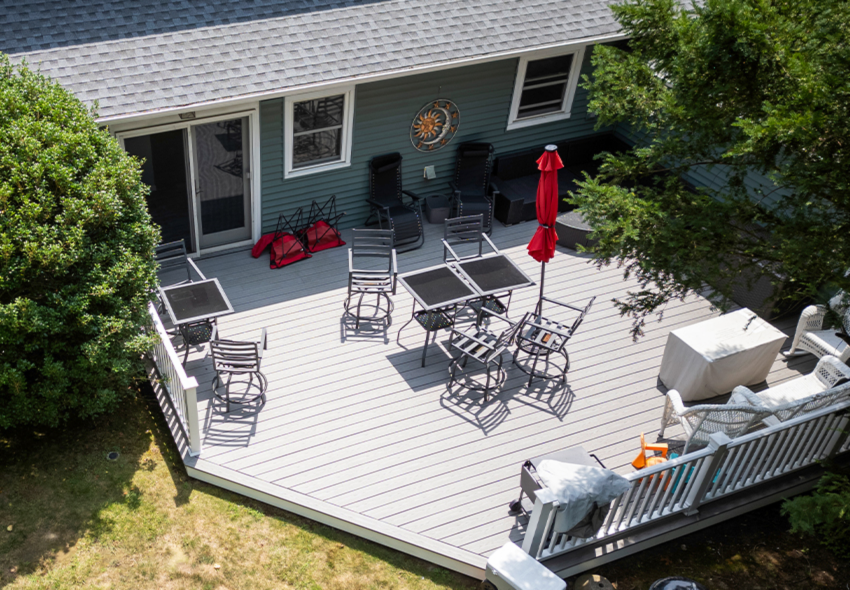
FAQs: Your Top Questions Answered
- Q: Can I install composite decking directly onto concrete without joists? A: No. Composite decking needs a support frame to provide structural integrity and airflow. Direct installation is not recommended.
- Q: What type of joists are best for concrete installations? A: Aluminum or composite joists are ideal due to their moisture resistance. Pressure-treated timber can work if elevated and well-ventilated.
- Q: How long does composite decking on concrete last? A: With proper installation and minimal maintenance, composite decking can last 25–30 years or more.
- Q: Is composite decking slippery when wet? A: High-quality composite decking typically includes anti-slip textures. It’s still best to choose boards rated for slip resistance in wet areas.
- Q: Can I install composite decking over cracked concrete? A: Minor cracks are acceptable if the slab is structurally sound. Major damage should be repaired or evaluated by a contractor.
- Q: Will I need to get a permit? A: If you’re installing a ground-level deck, permits are often not required. For elevated or rooftop decks, local regulations may apply.
- Q: Can I install composite decking over a rooftop concrete slab? A: Yes, with proper waterproofing, drainage, and structural support, composite decking is commonly used on rooftops.
- Q: Does composite decking get hot in the sun? A: Darker colors may retain more heat. Choose lighter shades or products with heat-resistant technology for sun-exposed areas. Conclusion Installing composite decking on concrete is not only possible—it’s practical, cost-effective, and visually rewarding. With proper preparation and high-quality materials, you can breathe new life into dull patios, aging slabs, or urban balconies. As a durable and stylish solution, composite decking on concrete—like the offerings from Hosung WPC—brings comfort and sophistication to any outdoor space.
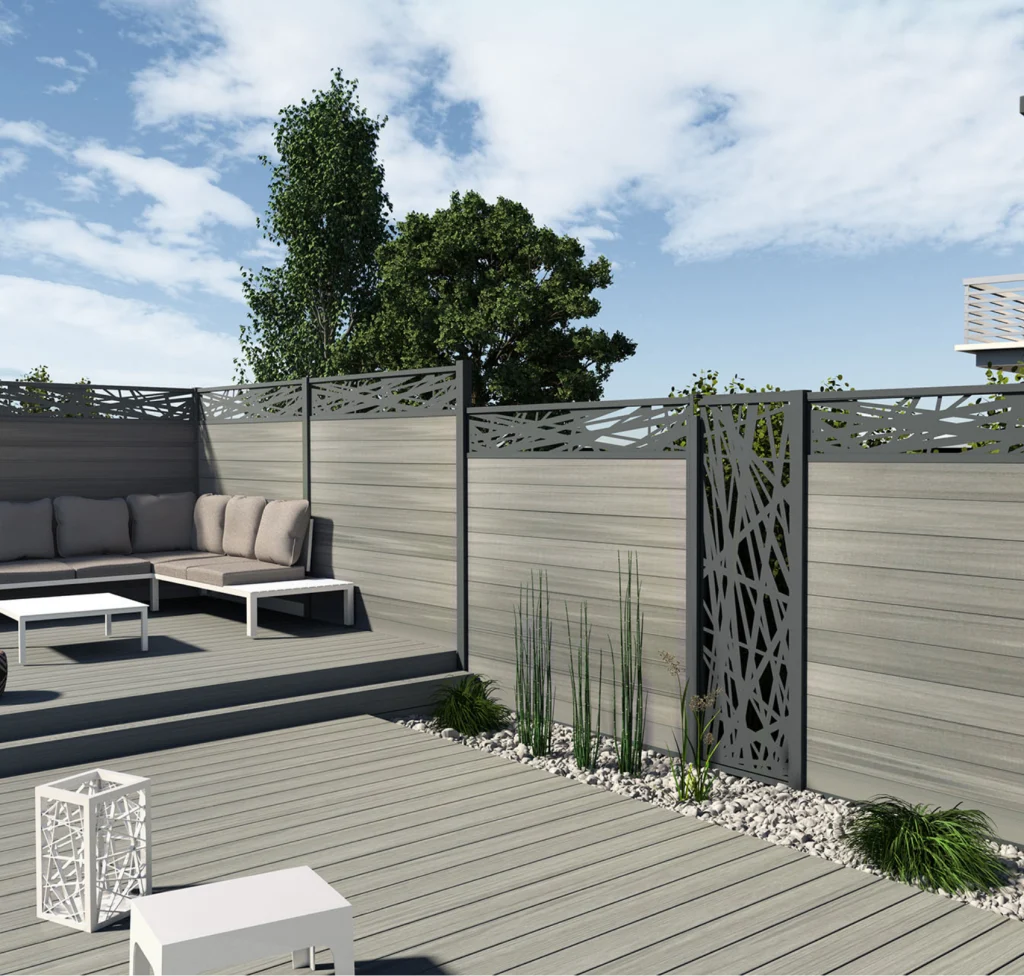
Conclusion
Installing composite decking over concrete is not only possible—it’s practical, cost-effective, and visually rewarding. With proper preparation and high-quality materials, you can breathe new life into dull patios, aging slabs, or urban balconies. As a durable and stylish solution, composite decking—like the offerings from Hosung WPC—brings comfort and sophistication to any outdoor space.

